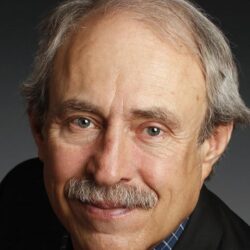CEO of Holy Cross Energy admits that he would relish the opportunity to plot an energy transition at a larger electrical utility. But, he said, capable CEOs need approprirate compensation.
by Allen Best
Bryan Hannegan, the chief executive of Holy Cross Energy, tends to be relatively open about what he’s up to. At least that has been the experience of Big Pivots in the last 7 years. (Including time before Big Pivots was created. We’re nearing our 6th anniversary).
So, it was not entirely surprising that he agreed to speak on the Empower Hour on Nov. 11 hosted by a Boulder-based group called Empower Our Future. The sessions normally go an hour with questions, and often beyond. (We spoke about water at the June session).
This session with Hannegan was extraordinary in that it lasted two hours, and Hannegan was willing to take on all the questions about distribution generation and storage, demand-management programs and on and on.
Well, almost all questions. At the outset of the Q&A, we asked to what extent the lessons of Holy Cross Energy in decarbonizing its energy could be applied to other utilities — and what are the limitations?
We had posed this same question to Hannegan before, in a different setting, and he had said that decarbonizing a larger utility such as Xcel is a more difficult task.
All utilities are reinventing themselves, from Xcel to the smallest electrical coop. But Holy Cross stands out in Colorado and beyond. It will probably end this year at nearing 90% electrical generation from renewable sources. Hannegan said that the success of Holy Cross lies in part in its quick decisions to go after renewables before supply chains kinked up. (Also extremely important: it moved its output from Comanche 3, a coal-burning unit of which it owns 8%, to Guzman Energy, leaving room for more renewables in its portfolio).
Hannegan did not answer our question directly, although he did offer small clues in the next hour. Then came the night’s final question from a listener. What would it take to get him to Fort Collins?
“The people that you want are in demand in a lot of places that pay really well, and I’ve had more than a few opportunities to join the ranks of the municipals and even some investor-owned utilities,” he replied. Those opportunities “made no sense for me economically.”
“And so some of this — and this is not fluffing my own pillow by any stretch; it’s a team effort — some of it is you might have to be brave enough to invest in the kind of leadership that it’s going to take within these companies to make the transition happen.”
At the outset of his time at Holy Cross, Hannegan said it would take time to get his team on board with his vision. Now, with the Holy Cross team seemingly fully united, he talked about “all the work that we’ve had to do to bring all 175 of our employees along on the journey, many of whom were openly skeptical and outright hostile to the notion” of abandoning what they saw as “good and holy and had gotten us to where we were.”
Now, he said, “they see the benefit of having done (the changes), but it requires leadership on the part of boards and managers, and a little bit of bricks, from time to time, from people that say you can’t do it. And you have to persevere.”
Relatively few managers, he added, have been able to do so. “And they’re all highly compensated, and it’s going to take a motivated city council or a motivated municipal utility to recruit that kind of talent.”
Hannegan then added that he would “love the challenge of doing this again on a much bigger scale, because as the climate scientist in the room, I’m pretty proud of the fact that we’ve taken a million metric tons of carbon dioxide equivalents out of the atmosphere by decarbonizing Holy Cross. But that’s a million metric tons in a 20 billion-metric-ton world. It’s a drop in the bucket, and so personally, I’d love to have the opportunity to play in the big league someday.”
For the record, Holy Cross has about 46,000 members. As for his compensation, as per ProPublica, Hannegan has a base salary of $650,376 and total compensation of $794,943. Holy Cross had operating revenues of $158 million in 2024, according to its annual report.
And one final note: the journey of Holy Cross is far from complete. Hannegan described the final 5% as being a real doozy.
You can watch/hear the almost two-hour Empower Hour session here.
- Another (near) Lake Wobegone year - November 15, 2025
- Bryan Hannegan & the bigger leagues - November 15, 2025
- After a misstep about nuclear, DIA now looking at all energy options - November 13, 2025






